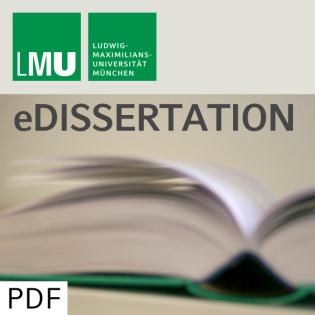
Using density matrix renormalization group to study open quantum systems
Beschreibung
vor 13 Jahren
This thesis is concerned with open quantum systems, and more
specifically, quantum impurity models. By this we mean a small
local quantum system in contact with a macroscopic non-interacting
environment. This can be used to model individual impurities in
metals and quantum information systems where the influence from the
surrounding environment is not negligible. The numerical
renormalization group (NRG) is the traditional method to study
quantum impurity models. However its application is limited when
dealing with real-time dynamics and bosonic systems. In recent
years some of NRG's techniques have been introduced to the density
matrix renormalization group method (DMRG), which itself is the
most powerful numerical method to study one-dimensional quantum
systems. The resulting method shows great potential, and this
thesis explores and extends the power of the NRG+DMRG combination
in treating open quantum systems. We focus mainly on two types of
problem. The first is an open quantum system with a time-dependent
Hamiltonian, which for example could be the theoretical description
of various problems encountered in qubit manipulation. We combine
NRG discretization and adaptive time-dependent DMRG (t-DMRG) to
study the dissipative Landau-Zener problem. We also use this method
to study the quantum decoherence process and the dynamical
properties of the telegraph noise model. The results show that the
NRG and t-DMRG combination is a fast, accurate and versatile method
for such problems. The second type of problem we study involves the
quantum critical properties of one- and two-bath spin-boson models.
Unlike fermion and spin models, models with bosons are difficult to
treat numerically as each boson basis has an infinite number of
dimensions. By introducing the optimal boson basis into the
variational matrix product state method (VMPS), which is a variant
of DMRG, we can deal with an effective local boson basis as large
as $10^{10}$. This is the crucial improvement over NRG which can
only deal with at most a few dozen local basis states. With this
powerful tool we have settled a controversy about the nature of the
quantum phase transition in a sub-Ohmic spin-boson model regarding
quantum to classical mapping. There, NRG fails to yield the right
result due to the highly truncated local boson basis. We also
explore the phase diagram of the two-bath spin-boson model and find
a new critical phase. We demonstrate that NRG+VMPS with optimal
boson basis represents a powerful setting to study quantum impurity
models with a bosonic environment.
specifically, quantum impurity models. By this we mean a small
local quantum system in contact with a macroscopic non-interacting
environment. This can be used to model individual impurities in
metals and quantum information systems where the influence from the
surrounding environment is not negligible. The numerical
renormalization group (NRG) is the traditional method to study
quantum impurity models. However its application is limited when
dealing with real-time dynamics and bosonic systems. In recent
years some of NRG's techniques have been introduced to the density
matrix renormalization group method (DMRG), which itself is the
most powerful numerical method to study one-dimensional quantum
systems. The resulting method shows great potential, and this
thesis explores and extends the power of the NRG+DMRG combination
in treating open quantum systems. We focus mainly on two types of
problem. The first is an open quantum system with a time-dependent
Hamiltonian, which for example could be the theoretical description
of various problems encountered in qubit manipulation. We combine
NRG discretization and adaptive time-dependent DMRG (t-DMRG) to
study the dissipative Landau-Zener problem. We also use this method
to study the quantum decoherence process and the dynamical
properties of the telegraph noise model. The results show that the
NRG and t-DMRG combination is a fast, accurate and versatile method
for such problems. The second type of problem we study involves the
quantum critical properties of one- and two-bath spin-boson models.
Unlike fermion and spin models, models with bosons are difficult to
treat numerically as each boson basis has an infinite number of
dimensions. By introducing the optimal boson basis into the
variational matrix product state method (VMPS), which is a variant
of DMRG, we can deal with an effective local boson basis as large
as $10^{10}$. This is the crucial improvement over NRG which can
only deal with at most a few dozen local basis states. With this
powerful tool we have settled a controversy about the nature of the
quantum phase transition in a sub-Ohmic spin-boson model regarding
quantum to classical mapping. There, NRG fails to yield the right
result due to the highly truncated local boson basis. We also
explore the phase diagram of the two-bath spin-boson model and find
a new critical phase. We demonstrate that NRG+VMPS with optimal
boson basis represents a powerful setting to study quantum impurity
models with a bosonic environment.
Weitere Episoden


vor 11 Jahren

vor 11 Jahren
In Podcasts werben






Kommentare (0)